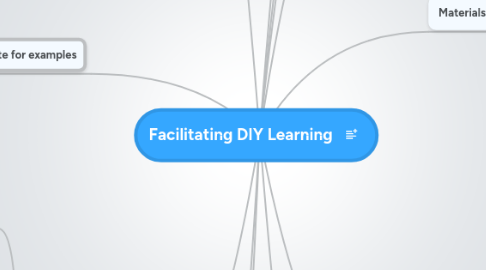
1. Examples from the outside
1.1. SOLE (Mitra)
1.2. Juggling Conference
1.3. Unschooling
1.4. Learning Scenarios Workshop
1.5. Virtual Reading Group
1.6. Quantified self?
1.7. MOOC
1.8. Edupunk
1.9. CoP
1.10. eHealth
1.11. Livemocha
1.11.1. Holds some of the principles:
1.11.1.1. Tools for content creation
1.11.1.2. Connection with other learners
1.11.1.3. Role as learner and as teacher
1.12. World without Oil
1.13. Simulation in the army
1.14. World of Warcraft (community)
1.15. Opleiding Onderwijskundig e-Learning Ontwerper
1.15.1. Design focus on building a self supporting learning group
1.15.1.1. Feedback
1.15.1.2. Collaborative learning
1.15.2. Learning = creating
1.15.3. After ending the course
1.15.3.1. LinkedIn group
1.15.3.2. Intervisie meetings
1.16. Kentalis
1.16.1. Coaching to learning professionals
1.16.2. They defined models
1.16.3. They created marketing material
1.16.4. They created criteria for quality of designs
1.16.5. They created webbased training
1.16.6. They defined a Learning Manifesto
1.17. Unconferences/Open Space
1.18. Yammer in large organisations
1.19. Invisible learning
1.20. Appification
2. Template for examples
2.1. Title
2.2. Main URL
2.3. Short description
2.4. Image
2.5. More information
2.5.1. Links
2.5.2. People
2.6. Short URL with QR code
3. Why?
3.1. Didactical (effectiveness)
3.1.1. Do - Reflect cycle
3.2. Knowledge work (no other options)
3.2.1. Specilization
3.2.2. Complexity
3.2.3. Drucker definition
3.2.3.1. Output is knowledge and information
3.2.3.2. Autodidact
3.2.3.2.1. Leonardo da Vinci
3.2.3.2.2. Ernest Hemingway
3.2.3.2.3. Quentin Tarantino
3.2.3.2.4. Steven Spielberg
3.2.3.2.5. Keith Moon, the drummer for the rock band The Who
3.2.3.2.6. Jimi Hendrix
3.2.3.2.7. Gustave Eiffel
3.2.3.2.8. Thomas Alva Edison
3.2.3.2.9. Charles Darwin
3.2.3.2.10. Malcolm X
3.3. ROI (efficiency)
3.3.1. Learner empowerment = Empowerment of professional = Business empowerment
3.3.2. Less investment in formal educational projects
4. Principles
4.1. Devolve power/responsibility to the learner
4.2. Learning / knowledge management / performance design
4.2.1. Architect
4.2.2. Designer
4.3. Learning Experience Design
4.3.1. Experience Economy
4.3.1.1. Pine & Gilmore
4.3.1.2. E.g. Disney
4.3.2. Interaction Design
4.4. Open
4.4.1. Content
4.4.2. Organization
4.4.3. Self assessment / self management
4.4.4. Inclusive/No boundaries
4.4.5. Reuse/Share
4.4.5.1. Creative Commons
4.4.5.2. OER
4.5. Self-organizing
4.6. Experience over content
4.7. You are an architect
4.7.1. Participatory theatre
4.8. Bootstrapping/Scaffolding
5. Barriers in corporations
5.1. The need for control over experience
5.2. Scared of sharing/opening up
5.3. Victim/passive mentality
6. To do
6.1. Slide maken met zwart-wit foto's van auto didacten
6.1.1. Marcel Vrijdag
6.1.2. Tweede slide met DIY-learner, DIY-professional
6.2. A4 met invulveld voor observatie pecha kucha, ook printen
6.2.1. Marcel
6.2.2. Vrijdag
7. Learning Lab Tuesday, 11:15 am - 12:45 pm Coronado P 661
7.1. Imagine a room that is designed for you and your colleagues to experiment with, touch, try, see and learn about learning innovations. For example, there will be Labs on “Interactive Books” (tablet/ebook) and Infographics (graphical displays of content/context).
8. Create a DIY Learning Manifesto in 1 group (15 min) 11.55
8.1. Create a mindmap
8.1.1. Hans tikt in
8.1.2. Marcel leidt met groep
9. Assignments/excercises
9.1. Define a learning manifesto
9.1.1. Will be published on a wiki
9.2. Create with the group a 80 second video message to the other Learning 2012 participants about DIY-learning
9.2.1. delivered on stage?
9.3. Use of job aids
9.4. Pitch your idea of be a judge
9.4.1. Dragons' Den
9.4.2. Create an elevator pitch
9.5. Communication game
9.5.1. Assignment without communication
9.5.2. Assignment with communication
10. Materials
10.1. Learning 2012 Wiki
10.2. Simple website
10.2.1. Links
10.2.2. Downloads
10.2.3. Disqus?
10.3. Job aids for the session
10.4. Brownpaper?
10.4.1. For notes etc.
10.5. Socrative or similar
10.5.1. http://www.edistorm.com/
10.5.2. http://socrative.com/
11. Scenario/design
11.1. Teaser (5 min) 11.15
11.1.1. What is the common denominator between these people?
11.1.1.1. Leonardo da Vinci
11.1.1.2. Ernest Hemingway
11.1.1.3. Quentin Tarantino
11.1.1.4. Steven Spielberg
11.1.1.5. Jimi Hendrix
11.1.1.6. Gustave Eiffel
11.1.1.7. Thomas Alva Edison
11.1.1.8. Charles Darwin
11.1.1.9. Malcolm X
11.1.1.10. Pictures
11.1.1.10.1. On the wall
11.1.1.10.2. On the site
11.2. Assignment (2 min) 11.20
11.2.1. Collect highlights from next pecha kucha
11.2.2. Job aid with focus points
11.3. LearningPitch: DYI fundamentals (8 min) 11.22
11.3.1. Hans & Marcel
11.4. Dive into examples (10 min) 11.30
11.5. Create a DYI Learning Manifesto in group of 3 (15 min) 11.40
11.5.1. Define the ingrediënts
11.5.2. Marcel
11.6. A. Create a new DYI Learning example (20 min) 12.10
11.6.1. Create a 15% session for Learning 2012?
11.6.2. Hans
11.7. B. DIY pitch (20 min) 12.10
11.7.1. Create a video/.../... to share with Learning 2012 community
11.7.2. Marcel
11.8. Wrap up
11.8.1. What have we discussed
12. To do
12.1. PPT slideshare
12.1.1. Checken
12.1.2. Uploaden app
12.1.3. Hashtag veranderen #DIY vs DYI
12.2. Wie doet wat
12.3. Hand-outs
12.4. Site
12.5. Testen video
12.6. Brooke
12.6.1. Whiteboard
12.6.2. Papers (letters), 15 x
